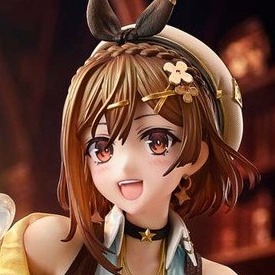The Japanese New Year, or Shogatsu, is a time filled with rich cultural traditions, each designed to bring good fortune and celebrate family, renewal, and prosperity. From the special decorations that grace homes to the foods prepared with care, every element of the celebration carries symbolic meaning.

Traditional Decorations for the New Year
In Japan, New Year decorations are essential for ensuring good fortune and warding off bad luck. These items are displayed throughout the home, each holding special significance and symbolizing different hopes for the coming year.
Kadomatsu

A quintessential New Year decoration, kadomatsu is an arrangement of pine, bamboo, and plum branches placed at the entrance of homes. These materials symbolize strength, longevity, and new growth, respectively, and are thought to invite the Toshigami (New Year’s deity) into the home, bringing blessings for the year ahead.
Shimenawa

The shimenawa is a sacred straw rope adorned with shide (zigzag paper strips), often placed at entrances or in sacred spaces to protect the household from evil spirits. These decorations help purify the home and create a boundary between the sacred and the mundane. On January 15th, many families burn their shimenawa at shrines during the Dondoyaki ceremony to remove bad luck and purify the year.
Kagami Mochi

The kagami mochi, a pair of stacked rice cakes with a tangerine on top, symbolizes the presence of the Toshigami in the home. After New Year’s Day, the rice cake is traditionally eaten during kagami-biraki, absorbing the deity’s blessings for health and prosperity.
Traditional Foods for the New Year
Food is at the heart of New Year celebrations, and many dishes carry symbolic meanings that wish for longevity, prosperity, and family unity. These foods are often prepared in advance to ensure a peaceful and auspicious start to the year.
Toshikoshi Soba

On New Year’s Eve, families gather to enjoy toshikoshi soba, which symbolizes the cutting off of past hardships and the wish for longevity. The long noodles are easily broken, representing the severing of past misfortunes, and must be finished before midnight to avoid bad luck.
Osechi Ryori

Osechi ryori refers to a set of dishes prepared with preserved ingredients, such as fish, beans, and vegetables, which are meant to last through the first days of the year. Each dish has its own symbolic meaning. For example, kazunoko (herring roe) represents fertility, while kuromame (black beans) are eaten for health and diligence.
Osekihan

Osekihan, a dish made with red beans and rice, is often served during the New Year period. The red beans symbolize good luck and prosperity, and sharing this dish with family signifies harmony and unity.
Other Traditional Customs
In addition to food and decorations, several other customs are essential to the New Year celebration, ensuring that the year ahead will be filled with happiness, health, and good fortune.
Otoshidama

One of the most eagerly awaited traditions for children is otoshidama, or New Year’s money. Elders give money to younger family members in small envelopes, passing on blessings and good fortune for the year ahead.
Hatsuyume

The first dreams of the New Year, or hatsuyume, are believed to predict the luck one will experience throughout the year. A good dream is considered an omen of a prosperous year, while a bad dream suggests misfortune.
Hatsumode: The First Shrine Visit of the Year

Hatsumode, the first shrine visit of the year, is one of the most cherished New Year traditions in Japan. During hatsumode, people visit a shrine to offer prayers for good health, prosperity, and protection in the coming year. This custom dates back to the Edo period and remains a significant part of the New Year celebrations in Japan.
At the shrine, visitors purify themselves at a water basin before offering prayers, often by tossing coins into the offering box and bowing respectfully. Many people also draw omikuji (fortunes), and if a bad fortune is drawn, it is tied to a designated area at the shrine to ward off misfortune. Visitors often purchase omamori (protective charms) for health, success, and other specific wishes.
While hatsumode is typically performed during the first three days of January, some people prefer to visit on New Year’s Eve, taking part in the Joya-no-Kane (除夜の鐘), a bell-ringing ceremony that occurs at midnight. The bell is rung 108 times to cleanse the worldly desires accumulated throughout the year.
The Year of the Snake: 2025 and Recommended Zodiac Figurines

As 2025 marks the Year of the Snake, many people in Japan celebrate the zodiac by incorporating the snake’s symbolism into their New Year celebrations. The snake is often associated with renewal, protection, and good fortune, and it is common to see snake-themed decorations during this period. Here are some recommended items to add charm and good fortune to your home during the Year of the Snake:
Lisa Larson Snake Figurine

A compact porcelain snake figurine by Lisa Larson, produced in the Hasami-yaki pottery style, makes for a cute and minimalist decorative piece. Its soft expression and small size make it a great addition to any home.
Snoopy Snake Figurine by Yoshitoku

For a playful touch, the Snoopy Snake Figurine from Yoshitoku combines the beloved character with the Year of the Snake. It’s a whimsical, charming piece for those looking to add fun to their décor.
Ryukodo Gold-Accented Snake Figurine

This elegant snake figurine with gold accents is perfect for those seeking a traditional and luxurious item. Its round form symbolizes prosperity and good fortune.
Handmade Wooden Snake Figurines (Iyo Ittobori Style)

These handcrafted wooden snake figurines are perfect for those who appreciate rustic, artisanal items. Made from natural wood, they carry an authentic charm.
Compact Ceramic Snake Figurine with Screen

For smaller spaces, a ceramic snake figurine paired with a decorative screen is a wonderful way to incorporate the Year of the Snake into your New Year’s celebrations.
Afternoon Tea’s 2025 New Year’s Collection: Natalie Lete × Kutani-yaki

For the Year of the Snake, Afternoon Tea has released a stunning collection designed in collaboration with artist Natalie Lete and Kutani-yaki pottery. This collection features unique, colorful items that combine European influences with traditional Japanese aesthetics, adding a touch of elegance to New Year’s celebrations. Here are some recommended items to add charm and good fortune to your home during the Year of the Snake:
Kutani-yaki Plates and Bowls

The collection includes beautifully crafted Kutani-yaki plates and bowls, such as the Middle Plate with Flowers and Middle Plate with Snake (¥4,400), and the Large Plate with Snake (¥5,940). These elegant pieces are perfect for serving New Year’s dishes, adding both beauty and functionality to your dining table.
Kutani-yaki Bean Plates and Small Plates



The Kutani-yaki bean plates featuring designs of the snake and lilies (¥1,650 each) are perfect for serving traditional osechi ryori or wagashi (Japanese sweets). These plates bring sophistication and charm to your table.
Kutani-yaki Three-Tiered Box


This stunning three-tiered box (¥19,800) is ideal for serving multi-layered osechi dishes or for storing New Year’s treats. The vibrant colors and intricate designs add a festive touch to your home.
Other Items in the Collection



The collection also includes decorative tea bags, scarves, and bags featuring charming snake designs. The Natalie Lete × Kutani-yaki collaboration also offers a variety of functional and decorative items such as teatime sweets, pottery, and storage boxes, all designed to celebrate the Year of the Snake with beauty and elegance.
These exclusive pieces not only enhance the New Year celebration but also bring a touch of luxury and whimsy to your home, making them perfect gifts or personal treasures for 2025.
The Japanese New Year is a time of renewal, family bonding, and cultural traditions that span generations. From symbolic decorations like kadomatsu and shimenawa to the delicious osechi ryori and the important ritual of hatsumode, each element of the celebration holds significance. The 2025 Year of the Snake adds an exciting twist to the festivities with special limited-edition items, such as the Natalie Lete × Kutani-yaki collection from Afternoon Tea, which brings together beautiful design and cultural symbolism. These items, alongside the traditional celebrations, help create an New Year experience filled with joy, prosperity, and good fortune.






